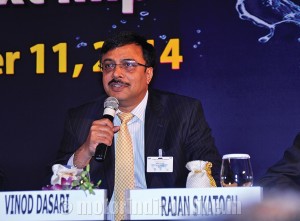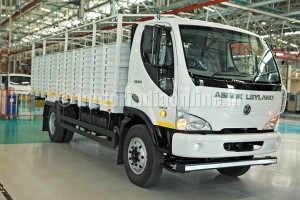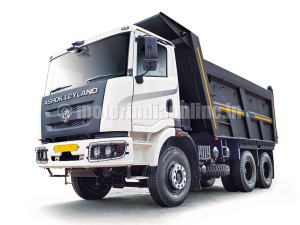Ashok Leyland has been on a quiet yet aggressive growth path, filling up gaps in its product portfolio and covering regions like the East with full vigor. A flurry of robust product additions, coupled with network expansion in full swing, has helped the company maintain its market position despite growing competition, and enabled it to defy the odds and stay strong. We learn more from Mr. Vinod Dasari, Managing Director, Ashok Leyland, as to how the company performed in the year that went by and what it expects from the current year.

Excerpts:
Business in 2014
We have grown over 20 per cent in 2014 despite general industry sluggishness. Much of this growth was driven by the wide variety of products that we had launched in the past 2 years, despite the challenging conditions, as well as the rapid network expansion that we had driven. We have launched new product platforms pretty much across the board – DOST, PARTNER, BOSS and Captain in trucks – and a variety of midi and large buses, including the Jan Bus. These products drove volumes for us. In addition, we have nearly doubled our network in three years to over 600 touch points, which helped our growth in the North and the East. For instance, in the East, we grew from less than 5% market share to 15-20%. Our parts are now available uniformly across the country, thanks to our all new network of over 200 Leyparts stores.
The above initiatives ensured that amidst increased competition, our market share in the 16 ton and above truck segment increased to 30-31%, from around 28-29% five years ago. In the 7.5 to 16-ton ICV (intermediate commercial vehicle) segment, our market share is 15%, up from 4-5%. In the sub-7.5-ton LCV (light commercial vehicle) segment, where we did not have any presence five years ago, our market share today is 14-15%. We have grown across regions on the strength of our products and network. In the East, we have grown from less than 5% to 15-20%.
In addition, we have focused single-mindedly on reducing material costs, controlling working capital requirements and cutting operating costs. This, plus the strict pricing discipline that we enforced, reflects in the profitability of the company which is up 2-3 per cent in the last 6-8 months.
Major plans for 2015
Much of our CAPEX investments have already been made over the past 5-8 years, and we do not anticipate any significant new CAPEX. We will at best invest in compact satellite assembly facilities in our various international markets, in a calibrated manner. Our product portfolio, spanning trucks to buses at different tonnages and seating capacities, is reasonably complete and our focus in 2015 will be to introduce new variants, depending on customer requirements, from our new platforms such as BOSS and Captain.
Expectations from CV industry in 2015
From being cautiously optimistic, we are today reasonably confident that the market is indeed coming back and that the worst may be behind us. In the domestic market, tankers, cement and white goods are starting to move and the easing of rates and the fall in diesel prices will improve operator profitability.
Truckers can offer a better deal on freight, with diesel becoming cheaper and every one per cent shift from train to trucks adding roughly 20,000 additional vehicles to the total industry volume. Replacement cycles had gone from 8-10 years to 10-12 years, and we’re hopeful that demand will come back in the very near-term. Our assessment is that the market will grow by ~10% this year and accelerate in subsequent years, once major infrastructure programs get started.
Industry policies & developments expected
As far as commercial vehicles are concerned, most of the policies that could stimulate growth are not targeted at the CV industry per se but towards the industries that consume commercial vehicles. Accelerated awarding as well as implementation of road programs, reopening coal mines, and restarting iron ore mining will create immediate demand for trucks.
In addition, urban renewal programs that create new transport corporations in towns across India and facilitate fleet expansion and replacement in existing transport corporations will be win-win actions, improving the lives of citizens, making the transport corporations viable due to more modern, productive buses and stimulating demand for the bus industry.
As far as the industry itself is concerned, limiting overloading, introduction of regulations that remove aged vehicles from the roads and other such measures will help improve the quality of logistics in the country while simultaneously driving demand.
Medium- to long-term outlook for CV segment
The CV industry is, we believe, at the cusp of its next business cycle. Depending upon how the Government drives GDP growth, the growth rate will accelerate over the next three years. However, having learnt from past business cycles, investors will exercise greater caution as well, so the ramp-up may be a little less exuberant and more measured. We expect substantial restructuring of the customer industry as well, e.g., the mix of vehicles bought will change due to GST implementation and consequent changes in logistics operations. We also expect the focus of customers to shift toward more productive trucks, as roads get better and the number of stoppages reduce, thanks to e-tolling, e-enablement of border paperwork and so on.

